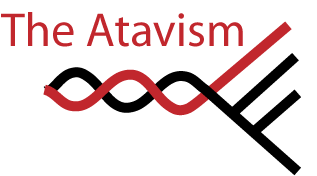Thursday, October 15, 2009
Human genomes
When I started out as a genetics student the big goal everyone was talking about was understanding "The Genome" - that monolithic set of DNA bases that make us human. Of course, there is no such thing. Pick two human genomes at random and you'll likely find 2 million single-base differences and plenty of structural differences on top of that. As with just about everything in life understanding the range of variation and the diversity in human genomes is much more interesting than focusing on the average of that diversity.
The publication of a draft sequence from the Human Genome Project in 2001 really was the begining of a new epoch in genetics (and a revelation in itself- it takes 20 000 genes to make a nematode and 25 000 to make us?) but the real value of that project has been the generation of a scaffold that subsequent projects like the super-optimistic 1000 genomes project, hapmap and the genographic project (which New Zealand researchers contribute to) have been able to inherit in their attempts to understand genomic diversity. This week Nature has a special issue focussing how data built on information from the Human Genome Project is contributing to the way we understand disease and even allowing personalised testing for genetic risk.
Unfortunately they've stuck one of the most interesting articles behind a pay wall (Nature, the people that bring you a special on science and society but don't let society read it...) Bruce Lahn and Lanny Ebenstein have an opinion piece on genetics and race.
The current moral position is a sort of 'biological egalitarianism'. ... the view that no or almost no meaningful genetically based biological differences exist among human groups, with the exception of a few superficial traits such as skin colour. Proponents of this view seem to hope that, by promoting biological sameness, discrimination against groups or individuals will become groundless.Of course, as Ebenstein and Lahn point out, there is a problem with this view - race almost certainly does have a genetic basis beyond a few superficial traits. To take the local slant Polynesians and in particular Māori represent the furthest extent of the series of migrations that followed our ancestors moving out from Africa. Settling the Pacific must have involved a series of population bottlenecks - events in which small groups form a new population representing only a fraction of the genetic diversity in the parental population. Such bottlenecks will have inevitably left a mark on the gene pool of Māori and Pacific Island populations that more recent interbreeding won't yet have erased. There will be some genes that are unique to Polynesian populations and others that are orders of magnitude more or less common than they are in other populations. If we embrace that genetic diversity we might be able to understand why Māori face a much greater risk to, for instance, diabetes, gout and liver disease than Pakeha. To, as people have really suggested, ignore that genetic diversity because racists might use it to further their stupid cause is, in the words of Lahn and Ebenstein "llogical, even dangerous" Oh, and by the way, whatever we find out about the genetic basis of race I think it's safe to say that genes won't care too much for national borders - but that's not going to stop the UK from genetically screening assylum seekers...
Labels: genetics, genomics, human genome, sci-blogs, science and society


